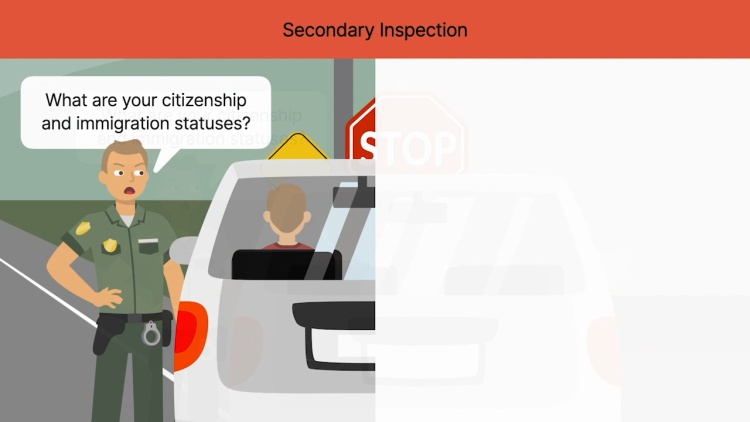United States v. Martinez-Fuerte
United States Supreme Court
428 U.S. 543 (1976)
- Written by Salina Kennedy, JD
Facts
The United States Border Patrol operated several permanent, internal checkpoints, all of which were situated on heavily trafficked roads more than 25 miles inland from the Mexican border and identified by prominent signage. At these checkpoints, traffic was significantly slowed and officers stood between lanes of traffic to conduct visual inspections of vehicles as they moved through the checkpoint. These officers could, at their discretion, send vehicles to a secondary inspection area so occupants could be questioned about their citizenship and immigration status. Vehicles selected for questioning spent an average of three to five minutes in the secondary inspection area. The vehicle in which Martinez-Fuerte (defendant)was traveling was stopped at one of these checkpoints and sent to the secondary inspection area, where he was arrested and charged in connection with the transportation of illegal Mexican immigrants. Martinez-Fuerte moved to suppress evidence related to the stop on the theory that the operation of the checkpoint violated his rights under the Fourth Amendment to the United States Constitution. The trial court denied Martinez-Fuerte’s motion, and he was convicted. The United States Court of Appeals for the Ninth Circuit reversed the conviction. The government (plaintiff) appealed, and the United States Supreme Court granted certiorari.
Rule of Law
Issue
Holding and Reasoning (Powell, J.)
Dissent (Brennan, J.)
What to do next…
Here's why 899,000 law students have relied on our case briefs:
- Written by law professors and practitioners, not other law students. 47,000 briefs, keyed to 994 casebooks. Top-notch customer support.
- The right amount of information, includes the facts, issues, rule of law, holding and reasoning, and any concurrences and dissents.
- Access in your classes, works on your mobile and tablet. Massive library of related video lessons and high quality multiple-choice questions.
- Easy to use, uniform format for every case brief. Written in plain English, not in legalese. Our briefs summarize and simplify; they don’t just repeat the court’s language.





